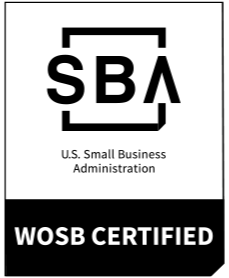Three Features of Influential Leaders
Leadership is a commitment to lifelong learning and development. It can be easy to slip into a task-based mindset, becoming a senior manager rather than a true leader, but an engaged leader is the first and most critical component of organizational goal achievement and personal fulfillment.
Emerald One’s Chief Experience Officer, Kai Fawn Miller, is an executive coach and strategic communication consultant with over 25 years of direct executive experience, giving her a unique perspective on the intangible qualities of today’s top leaders. Whether you’re in the C-suite or just starting out, introspection and focus on your areas of development to see the results in your team. Engagement, self-awareness, and honesty are blueprints for becoming an effective leader. Keep reading for tips and tactics you can use in your leadership development.
Engagement
“Engagement is #1,” Kai said. If you’re a manager, carve out time to get to know your team. Connect with people rather than tasking them. Employees consistently identify their immediate leader as the most important element of their job satisfaction. Engagement builds connection, and employees who feel connected to their leader can often feel more confident. Similarly, engaged leaders often have more influence over their teams. Here are three easy steps to build engagement:
In 1:1 meetings, build an agenda that allows you to spend a few moments talking with team members about how they are doing. Well-being can impact progress and is an essential indicator for you as a leader. These quick check-ins also allow your employees to build trust with one another.
When team members need to catch up or are falling behind on deadlines, ask them what they need and find ways to help identify solutions. “In today’s environment, the best leaders are those who coach,” said Kai. “Asking questions, getting curious, and helping employees build the skills to solve problems creates a cycle of development that can be so beneficial in today’s dynamic, constantly-changing environment.” Take a look at Harvard Business Review’s Leader as Coach for more tips about adopting the coaching mindset.
Use that agenda! Clearly outline the outcome you need, then stick to it. Shorter, more productive meetings mean that your team will leave feeling energized, focused, and engaged rather than exhausted. Some leaders expect others to develop the agenda, then “manage the manager” during the meeting. This often results in topic creep and divergence; eventually, your team will dread the meetings. Instead, engage and take ownership of your words and actions in meetings.
Self-Awareness
Self-aware leaders learn how to handle pressure without being emotionally reactive. This takes practice and constant commitment. Kai’s tips below can provide some simple markers to help you monitor your self-awareness.
Self-awareness can be as simple as showing up in a Zoom meeting with eye contact, good posture, and a look of engagement on your face, especially if you’re tired or super busy.
Be the thermostat, not the thermometer. Set the energy in the room or the meeting by knowing your strengths and weaknesses. What are your pressure points? Prepare for each session by identifying potential stress points and knowing how you’ll handle them rather than reacting when overwhelmed. A key phrase, word, or discreet physical cue can help. Repeat them internally when stressed.
High-performing athletes pay attention to their limits. High-performing leaders must do the same. If you’re feeling tired or under pressure, and have a meeting with your employees, think about your strategy. If you’re very consistent with your meetings, consider canceling. If you need to hold the meeting, find five minutes to give yourself a mindful break. Get outside, take a deep breath, and get in the right state. Do not muscle through simply because you have an appointment on your calendar. An unintentional emotional reaction can cause damage and even more stress.
Honesty
Clear is kind. Great leaders recognize that clarity sets up their employees for success and heads off potential conflicts. Honesty and transparency are difficult habits to build. Here are three steps to be more honest in your role:
- When something feels wrong, talk openly about it with a relaxed approach.
- Don’t settle for less. Honest people strive for more because they can handle transparency.
- Be gentle with yourself. Work with a clear mind and open heart; you’ll come out on the other end with a smile.
“My leadership style focuses on my team, the strengths of each team member, the ways they show up in different circumstances, and how we’re working together,” said Kai. “That includes me. If I cannot show up for my team in a meaningful way, I’m doing them a disservice. If I’m not providing clear instructions and boundaries, how can I expect them to be successful? Being a leader is a discipline and a skill, and focusing some of my energy on that skill development each day provides my team with the greatest opportunity for success.”
Leadership anchors Emerald One’s Elements of Brilliance™ approach, our service methodology, operational foundation, and strategic driver. We align and tailor the five facets—Leadership, Cultural Awareness, Trust, Value Maximization, and Time Compression—to each project, creating the environment and energy needed to spark innovation and improve overall project value.
Kai Fawn Miller brings over 20 years of leadership, communication, and outreach experience to Emerald One. She served as the Chief of Staff of the Office of Information and Technology at the Department of Veterans Affairs (VA). She held varied leadership and outreach positions at VA and NASA, in addition to founding three strategic communications and executive support organizations. Kai’s focused approaches to transformational outreach campaigns, change management, culture strategy, and branding transform small wins into big victories.







